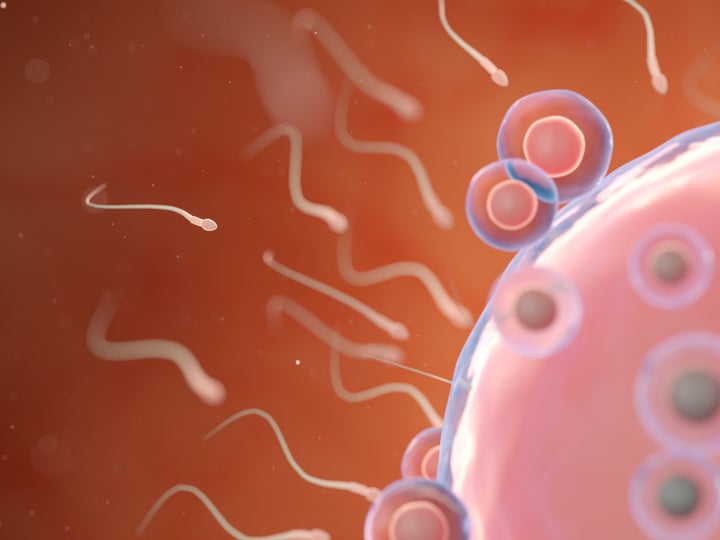
Despite centuries of blame falling to women when it comes to conceiving, it turns out modern-day men could trigger a reproductive crisis.
You could be forgiven for thinking otherwise, after a Polish politician blamed women drinking alcohol for the country’s decline in birth rate earlier this year, or a UK demographer proposed introducing a ”‘negative child benefit’ tax for those who do not have offspring”.
And as women repeatedly have to defend themselves over not having children (including stars like Jennifer Aniston), or for not being beside their children 24/7 (as actor Emily Blunt has noted), this study proves it’s time for us to turn our attention to someone else when it comes to baby questions – men.
It all comes down to their sperm count, accounting to a new study published in the journal Human Reproduction Update.
Looking at an estimate from 153 men who probably were not aware of their fertility, researchers found the average sperm concentration has dropped significantly in the last 45 years.
Back in 1973, the average concentration was at 101.2 million per ml – by 2018, it had fallen to 49.0 million per ml. This works out to a 51.6% reduction. It’s also the mean figure, so there may be a substantial portion of men with concentration below this level.
For context, previous research has suggested that global fertility could be under threat if sperm concentration drops below 40 million per ml.

Professor Hagai Levine, the first author of the research from the Hebrew University of Jerusalem, also warned that “this is another signal that something is wrong with the globe”, and that this is a “crisis”.
“Such a decline clearly represents a decline in the capacity of the population to reproduce,” Levine said.
Sperm count, the total number per one sample, also fell by 62.3% during this period, meaning both the quantity of ejaculate and the number of sperm per ejaculate has fallen significantly.
This study included findings from 53 countries, with declines recorded in Europe, North America, Australia, South America, Africa and Asia.
The researchers also found that the rate of decline seems to have sped up across all areas since the study began in 1972.
At the start, sperm concentration fell by 1.16% per year, but by 2000, it’s now falling at a rate of 2.64% since 2000.
The study does factor in age, how long men have gone without ejaculation and excluded those already known to struggle with infertility.
It is worth remembering that counting sperm is really difficult, and that the counts nowadays may just be more accurate now compared to 45 years ago.
But, the decline is still noteworthy, according to scientists who did not take part in the study, although the exact cause for this worldwide phenomenon is yet to be determined.
It could be linked to anything from environmental factors, smoking, drinking, to poor diet and obesity.
Although the global population has reached a record total of eight billion living humans as of November 15, the rate of growth has tailed off, according to the UN’s projections, and will continue to dwindle across the next century.
So next time someone tries to blame women for having fewer children and prioritising their careers, remind them: it takes two to make a baby.